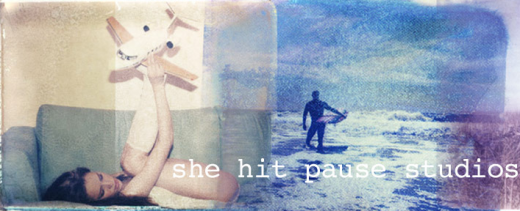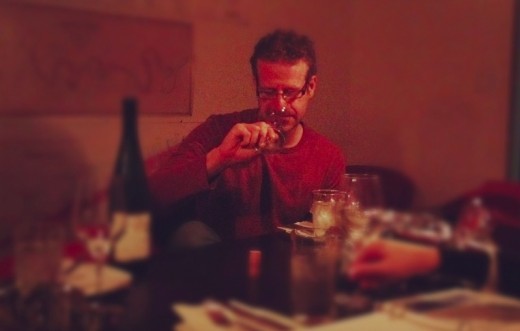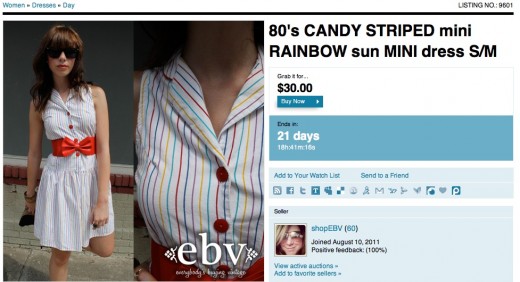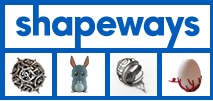
From rags to riches, from trailer parks to white mailboxes, the climb is all part of the “American Dream.” But this dream– the equal opportunity to achieve success and prosperity from one’s hard work– is really more human than just American and its ethos has never been so tangible as in the early days of the Internet. And yes, dear reader, we are still in its early days–very early days.
While the global economy has slowed in recent years, taking its toll on the job market, entrepreneurs and creative types are finding a competitive advantage online. And I’m not talking about traveling to China and re-selling Nike sneakers on eBay. I’m referring to chefs hosting supper clubs, mom and pops selling baked goods, designers building online stores; professionals becoming educators; and people fulfilling their dreams while connecting to a larger audience than was ever before possible.
eBay, which was founded in 1995, exploded over the past two decades as an epic marketplace for people to build their businesses online. And in more recent years, Etsy, which was founded in 2005, has 1.4 million active shops on its platform and has spurred an online revolution for creative entrepreneurs.
“At Esty, we encourage people to pursue their passions, not just strive for a quick buck. We try hard to avoid giving the impression that instant riches will easily be yours if you open an online shop. In the end, it’s much more rewarding to put in hours for something that you care about, even if you don’t end up making a lot of money from it. The value proposition goes far beyond that,” says Etsy’s Adam Brown.
As for sellers who make a living on Etsy, you’ll find plenty of great stories in the company’s Quit Your Day Job series. Now, let’s take a look at a few under-the-radar startups that are making powerful moves to change the way inspired entrepreneurs can make money doing what they love on the Internet.
Goodsie: Ecommerce made easy
 Entrepreneur Jonathan Marcus, who’s the founder of the all-new Flavors.me, launched Goodsie in May 2011 of this year to bring simplicity to the e-commerce space. If you’ve ever tried to sell something online, you know how much of a challenge that can be. You either have to deal with website plug-ins that are difficult to master or end up using third-party sites that offer limited control and customization. These barriers to entry can be too high to climb for the mom and pop online shop. Goodsie is both easy to use and it’s elegant.
Entrepreneur Jonathan Marcus, who’s the founder of the all-new Flavors.me, launched Goodsie in May 2011 of this year to bring simplicity to the e-commerce space. If you’ve ever tried to sell something online, you know how much of a challenge that can be. You either have to deal with website plug-ins that are difficult to master or end up using third-party sites that offer limited control and customization. These barriers to entry can be too high to climb for the mom and pop online shop. Goodsie is both easy to use and it’s elegant.
Louisa Conrad and Lucas Farrell started BigPictureFarm on Goodsie in the fall of 2010 to sell the most delicious handmade, farmstead goat milk caramels ever. The secret ingredient is their milk, supplied by their very own herd of Saanens and Alpines that live healthy and happy lives browsing the rich pastures and leafy woodlands of their farm in Townshend, Vermont.

In music, Skrillex has been the breakout star of 2011 on Goodsie. The artist was nominated for 5 Grammy’s, the same number as Lady Gaga and Katie Perry combined. His team has been using Goodsie for merchandise sales since its early beta and is now rolling it out to other artists on Skrillex’s label, like Porter Robinson, Zedd and 12th Planet. Louisa and Lucas love farming and Skrillex loves making music – Goodsie helps them both earn a living while pursuing their respective crafts and passions. Today, Goodsie has 1,000 active, paying sellers, and is growing 20% month-over-month.
Memberly: Subscription services
 Subscription service startups were hot this year. There’s Birchbox for makeup, Lollihop for health food, Bluum for new moms, Guyhaus and Hoseanna for staples like hosiery and deodorant, BarkBox for dogs… the list goes on. In July of this year, the folks at Disrupto, a trendy digital product agency in New York City, launched Memberly, a platform that helps individuals and small businesses run their own subscription programs.
Subscription service startups were hot this year. There’s Birchbox for makeup, Lollihop for health food, Bluum for new moms, Guyhaus and Hoseanna for staples like hosiery and deodorant, BarkBox for dogs… the list goes on. In July of this year, the folks at Disrupto, a trendy digital product agency in New York City, launched Memberly, a platform that helps individuals and small businesses run their own subscription programs.
“We’re starting to see a revival of consumers interacting with people they know, people who have an expertise. And that is really exciting. People are curating and selling products with their knowledge and expertise. It’s never been easier making a living doing what you love,” said Memberly co-founder Jack Cheng in a recent interview with The Next Web.

While Memberly is very selective about who it lets on its platform, three notable Memberly members include: La Colombe Coffee, an established retailer with 3-4 locations in New York City that’s started selling coffee subscriptions similarly to other notable NYC startup Craft Coffee; Umba Box, a company that curates handmade gifts; and She Hit Pause Print Club where artist Matt Schwartz takes large-format Polaroids, pulls apart the film and rubs the negatives onto watercolor paper, creating dreamlike transfers described by some as “walking into a memory.” By subscribing to SHPPC on Memerbly, each quarter, you’ll receive a different signed 4×5″ print, matted in 8×10″, along with a collectible surprise—hand-picked by Schwartz.
SideTour: Experience marketplace
![]() SideTour is a peer-to-peer marketplace of marketable serendipity. The New York City based startup opens a window into someone’s world and provides inspiring and talented hosts with a new storefront-like marketplace, much like Etsy did for artists. Since its launch out of the TechStars incubator in October of last year, 50 different people have used the platform to host experiences.
SideTour is a peer-to-peer marketplace of marketable serendipity. The New York City based startup opens a window into someone’s world and provides inspiring and talented hosts with a new storefront-like marketplace, much like Etsy did for artists. Since its launch out of the TechStars incubator in October of last year, 50 different people have used the platform to host experiences.
The most successful experiences have included:
- Getting a personal preview and tasting of America’s next great fast casual restaurant–the host “Suds” was the runner-up on NBC reality TV show “America’s Next Great Restaurant” and he’s now working to open his own restaurant, using SideTour to test recipes and build his digital brand.
- Brooklyn Rooted–where guests enjoy an artisanal dinner party hosted by the outstanding former sous chef of Aquavit and the Spotted Pig. The host wanted to spend more time with her fiancée and the life of a sous chef didn’t allow her to do that so she used SideTour to create her own Supper Club.

There’s also: Learn the secrets to buying wine worth your money, which was such an awesome experience that I wrote about it here; Enjoy a fireworks display on a private sailboat–a super successful experience over the summer; Experience the last chance to test drive the Tesla Roadster in NYC; and the ever popular dine with a Banker-turned-Monk at an East Village monastery.
Skillshare: Education
![]() Skillshare is a community marketplace that enables users to learn anything from anyone, thereby democratizing learning. We’re big fans of Skillshare here at The Next Web. In November of last year, I taught a Skillshare class with Mashable’s Sarah Kessler on how to pitch to media. 40 people signed up! We donated all of the proceeds to Raise Cache for HackNY. CEO Michael Karnjanaprakorn shares a couple of examples of people who’ve made money doing what they love on Skillshare:
Skillshare is a community marketplace that enables users to learn anything from anyone, thereby democratizing learning. We’re big fans of Skillshare here at The Next Web. In November of last year, I taught a Skillshare class with Mashable’s Sarah Kessler on how to pitch to media. 40 people signed up! We donated all of the proceeds to Raise Cache for HackNY. CEO Michael Karnjanaprakorn shares a couple of examples of people who’ve made money doing what they love on Skillshare:
Programmer extraordinaire Avi Flombaum has made tens of thousands of dollars teaching on the Skillshare platform. In fact, he ended up quitting his job. Now, he teaches at night, and spends his days traveling around the world and working on his next startup. Here’s a great video showcasing his story:
Another Skillshare teacher turned entrepreneur named Victoria wrote Mike this email last year:
All has been very well. I have been meaning to let you know that Skillshare enticed me to get my biz going in flowers, after my flower class that I taught! I specialize in creating on-brand weekly flowers for luxury and retail boutiques and corporate clients at Flower Details…Thanks for the inspiration and the push!
So far her business has been a success with clients including Equinox gym and Magnolia Bakery.
Quirky: Product innovation
 Quirky is a website that enables people with bright ideas to become inventors without dealing with the financing, engineering, distribution or legalities associated with such an undertaking. On Quirky, which we first covered in our post How to Effectively Crowdsource Product Design, anyone can upload an idea for $10 and then anyone in the Quirky community, which now has over 155,000 members from over 100 cities, can respond to the design. Each week the company crowns two new Quirky inventors to move into the research, design and product development phase of these new product ideas. When a product is complete and starts making money, 30% goes back to the Quirky community, a portion of it to the “ideator” and the rest to those who commented on the design during the one week community vetting period.
Quirky is a website that enables people with bright ideas to become inventors without dealing with the financing, engineering, distribution or legalities associated with such an undertaking. On Quirky, which we first covered in our post How to Effectively Crowdsource Product Design, anyone can upload an idea for $10 and then anyone in the Quirky community, which now has over 155,000 members from over 100 cities, can respond to the design. Each week the company crowns two new Quirky inventors to move into the research, design and product development phase of these new product ideas. When a product is complete and starts making money, 30% goes back to the Quirky community, a portion of it to the “ideator” and the rest to those who commented on the design during the one week community vetting period.
Quirky was founded in 2009 by the now 25-year-old CEO and founder Ben Kaufman. Since then, the company has launched over 35 products sold, has 28 in production and a lot more coming down the pipe. To date, 1,500 inventors have been paid out on Quirky. One of Quirky’s success stories is from a young inventor named Jake Zien who invented Pivot Power, a pivoting power strip. The product, which has sold 185,567 units to date, has earned Zien $70,000.

I bought this Bobble Brush Toothbrush Stand for my roommate from Quirky since my Sonicare takes up quite a bit of sink real estate. I think it’s pure genius. Might you have a bit of pure genius up your sleeve?
Chloe + Isabel: Jewelry sales
 Remember how Mary Kay empowered stay at home moms to launch sales careers? Chloe + Isabel is doing just that with fashion jewelry sales and the New York City startup is targeting young, entrepreneurial women. The impressively backed startup is run by Chantel Waterbury, who spent 14 years in corporate merchandising working with brands like Cartier, Tiffany and Co., and Van Cleef and Arpels. How does C+I help people make money doing what they love?
Remember how Mary Kay empowered stay at home moms to launch sales careers? Chloe + Isabel is doing just that with fashion jewelry sales and the New York City startup is targeting young, entrepreneurial women. The impressively backed startup is run by Chantel Waterbury, who spent 14 years in corporate merchandising working with brands like Cartier, Tiffany and Co., and Van Cleef and Arpels. How does C+I help people make money doing what they love?
“Chloe + Isabel is a place where smart, stylish women can discover and grow their entrepreneurial skills,” says Waterbury. “It’s the opportunity I wish I had when I first started my career as a young, ambitious woman with the goal of one day being my own boss! Chloe + Isabel offers a chance for women to start their own jewelry businesses, setup their own virtual boutiques, and choose their own hours. We’re committed to encouraging and celebrating smart, creative women so they can kick-start their own careers on their own terms.”
Market Publique: Vintage fashion
![]() If vintage clothing is your passion, look no further than Market Publique. MP is the only community exclusively for vintage clothing sellers, so it’s become a destination for buyers looking for fashionable vintage that do not want to sift through all the handmade items on Etsy or the knockoffs on Ebay. MP curates the sellers, which are either invited or go through an application process, to ensure that everyone is in good company and the quaility of vintage and photography on the site stays high.
If vintage clothing is your passion, look no further than Market Publique. MP is the only community exclusively for vintage clothing sellers, so it’s become a destination for buyers looking for fashionable vintage that do not want to sift through all the handmade items on Etsy or the knockoffs on Ebay. MP curates the sellers, which are either invited or go through an application process, to ensure that everyone is in good company and the quaility of vintage and photography on the site stays high.
“This is very important to both sellers and buyers because it elevates vintage as a whole,” says MP Founder Pamela Castillo. “When you have people selling items photographed on the carpet or on a scary mannequin with an unbrushed wig, it perpetuates the stigma some people have of vintage being ‘old clothes’ or not fashionable. Our site is for great quality, stylish vintage that can integrate seamlessly into your everyday wardrobe.”
MP’s tools, taxonomy and listing process is designed specifically for vintage, making it easier and quicker to list than on Ebay or Etsy, and easier to shop as well. For example: You can create a template easily; Use a bulk photo uploader; Edit photos in the browser; and schedule listings and relist automatically.
Unlike Etsy, MP advertises in many other fashion communities like Chictopia, Lookbook.nu and Fashism. The site also work with bloggers and has produced look books for Thrifted & Modern and with Liz Cherkasova of Late Afternoon.

Everybody’s Buying Vintage or shopEBV is one of the most active sellers on Market Publique. The shop auctions extremely affordable vintage clothing exclusively on Market Publique and has been incredibly successful with consistent listings and great photography. Castillo says the owner makes most of her income via Market Publique while maintaining a brick and mortar operation in Alabama.
Need a website? Check out OnePager
 “The first time a paying customer signed up at Onepager was a great feeling of validation, relief and excitement,” says co-founder Matt Shampine who launched the service earlier last year. On the flip side, I’m willing to be that the paying customer who signed up at Onepager also had a feeling of validation, relief and excitement. Like a Flavors.me for companies, Onepager helps people give their business an online presence in an affordable, effective and easy way.
“The first time a paying customer signed up at Onepager was a great feeling of validation, relief and excitement,” says co-founder Matt Shampine who launched the service earlier last year. On the flip side, I’m willing to be that the paying customer who signed up at Onepager also had a feeling of validation, relief and excitement. Like a Flavors.me for companies, Onepager helps people give their business an online presence in an affordable, effective and easy way.
“There is a gap between small businesses and technology. I’m not even talking about social media; nearly half of small businesses in America don’t have a website!” says Shampine. “Small business owners are realizing that the web is how people discover new businesses and organizations, so the demand for a professional looking website has never been higher. We’ve designed Onepager to be an elegant do-it-yourself platform that removes the need for extensive coding knowing, which saves small businesses time, stress, and money. All of us at Onepager grew up in small business families, so we think that’s pretty cool.”
Since its launch in August, over 20,000 websites have been created on Onepager from a variety of businesses such as restaurants, real estate, non-profits, and consultants.
Shapeways: Make money with 3D Printing
We are huge believers in the power of technology to feed creativity and new kinds of businesses. 3D printing in general and Shapeways in particular is exactly that kind of transformative technology. It is still not on the radar of most people. But that is rapidly changing.
–Fred Wilson of Union Square Ventures
While technically not “on the Internet”, 3D printing startup Shapeways is a great example of how new technologies can help you make money doing what you love. The growing Shapeways community – comprising over 100,000 designers, makers, hackers, enthusiasts and shoppers – proves the widespread demand for personalized products is on the rise. Since the company’s launch in 2008 it’s printed nearly 1 million 3D products.

It seems 3D printing is really heating up as Shapeways shop owners earned over $270,000 in revenue in 2011 alone, compared to $100,000 from its launch in 2008 through April 2011. In 2011, Shapeways printed over 750,000 individual products and delivered them to people around the world. There are now over 4,400 shops on Shapeways, and several designers are making a living selling 3D printed products. A couple great examples are:
- Nervous System: designers who have quit their day job because of 3D printing and are featured in top stores, including the MOMA Design Store. (Hyphae lamp pictured above.)
- Michiel Cornelissen: a leader in developing gadget accessories
- Bathsheba Grossman: a designer who specializes in mathematical art
- Virtox: Dutch designer who is very active in the Shapeways community
Need Funding? Try Kickstarter
![]() Kickstarter is a funding platform for artists, designers, filmmakers, musicians, journalists, inventors, explorers and other creative types that is not only an incredible startup in its own right but it has the unique ability to spawn other start-ups. Founded in April 2009 by Perry Chen, Yancey Strickler, and Charles Adler, the site is undoubtedly one of the coolest growing businesses in New York City.
Kickstarter is a funding platform for artists, designers, filmmakers, musicians, journalists, inventors, explorers and other creative types that is not only an incredible startup in its own right but it has the unique ability to spawn other start-ups. Founded in April 2009 by Perry Chen, Yancey Strickler, and Charles Adler, the site is undoubtedly one of the coolest growing businesses in New York City.
Since its launch, more than 16,500 projects have successfully met or exceeded their funding goal to-date with more than $130 million dollars pledged to projects. Of those projects there are 16 film projects that have used Kickstarter to find funding and build an audience that will premiere at Sundance later this month (that’s about 10% of the festival’s slate of films). There were even 3 film projects that have been shortlisted for Academy Award consideration.

Recently, The Printrbot project blew past its $25,000 goal and reached more than $830,000. Check out the most significant moments of 2011 on Kickstarter here.
Other great sites that we’d like to mention include: Create My Chocolate, which lets you create and sell your own bar of chocolate; Gidsy, which rocks a similar model to SideTour; Stella & Dot, which is similar to Chloe & Isabel but for stay-at-home moms; startups 20X200 and Artsicle help artists turn their work online; Stitch Labs, a design-focused fully integrated business management suite for the SMB market, helps users hold the many different aspects of a manufacturer or wholesaler’s business together; Shopify, an online software-as-a-service eCommerce platform that’s enabling entrepreneurs to create new online businesses (check out 10 online stores building their businesses with Shopify); and don’t miss the San Francisco based crowdsourcing phenomenon IndieGoGo.
Now, you have a few new tools. Roll up your sleeves and the rest is up to you! Let us know if you need any help getting started in the comments.
Finding work you love is very difficult. Most people fail. Even if you succeed, it’s rare to be free to work on what you want till your thirties or forties. But if you have the destination in sight you’ll be more likely to arrive at it. If you know you can love work, you’re in the home stretch, and if you know what work you love, you’re practically there.
-Paul Graham, How to Do What You Love
Full disclaimer: This post was written while making money doing what I love on the Internet.
image credit: goldsaint via Shutterstock
Get the TNW newsletter
Get the most important tech news in your inbox each week.
 We are huge believers in the power of technology to feed creativity and new kinds of businesses. 3D printing in general and Shapeways in particular is exactly that kind of transformative technology. It is still not on the radar of most people. But that is rapidly changing.
We are huge believers in the power of technology to feed creativity and new kinds of businesses. 3D printing in general and Shapeways in particular is exactly that kind of transformative technology. It is still not on the radar of most people. But that is rapidly changing.



